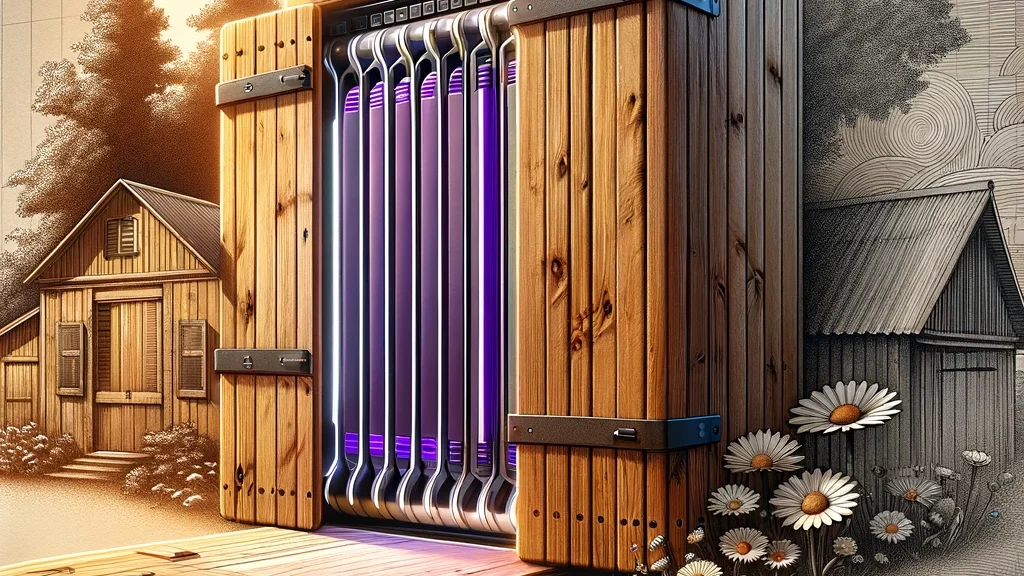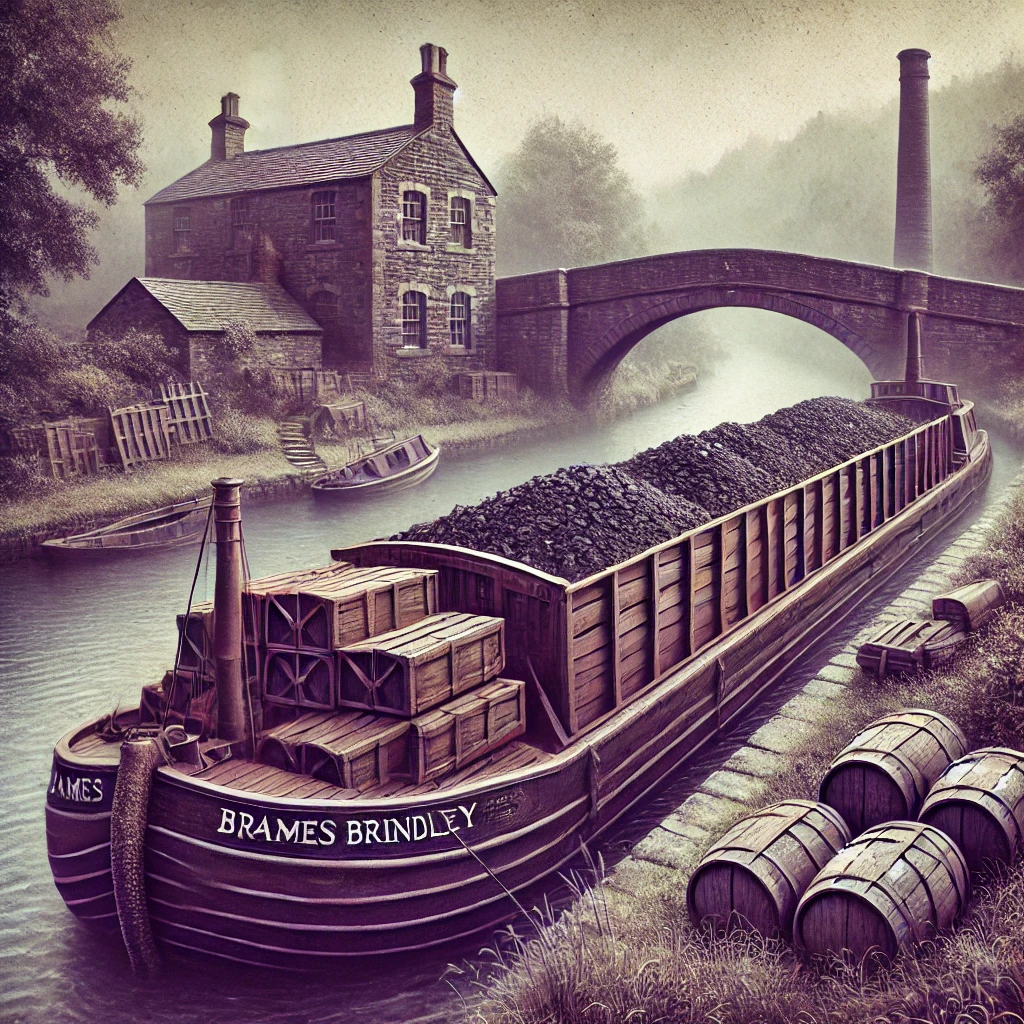The journey of wooden storage containers in the United Kingdom began long before the age of digital logistics. In the mid-18th century, the ingenuity of early engineers laid the groundwork for what would become a lasting legacy in domestic and commercial storage. One of the most seminal innovations was James Brindley’s Starvationer barge, designed in 1766 to shuttle coal from the Worsley Delph quarries to Manchester via the Bridgewater Canal. This pioneering vessel featured dedicated wooden compartments capable of transporting between 2 to 12 tons of coal—a marvel of modular cargo design that prefigured modern containerisation.
How did early innovations like Brindley’s Starvationer barge shape containerisation?
Early containerisation was not merely about moving goods; it was a solution to the complexities of multimodal transport. Consider these key points:
- Intermodal Pioneering: By the 1830s, the “loose boxes” evolved into interoperable units transferable between barges, railcars, and horse-drawn wagons, establishing a foundation for today’s intermodal logistics.
- Standardisation Beginnings: These early systems’ dimensions and compartmental designs laid down principles—uniformity, structural integrity, and volumetric efficiency—that resonate in modern ISO container standards.
- Legacy Innovations: The Little Eaton Gangway (1795) refined these concepts, employing standardised timber wagons to facilitate smoother coal transfers between canal barges and rail networks. This is a precursor to our contemporary removals and storage solutions.
- Future Trends: Explore emerging technologies and sustainable practices shaping the future of removals and storage.
- RAD Integration: See how RAD Removals & Storage combines traditional wisdom with modern logistics for a truly RAD experience.
These early advancements solved immediate logistical challenges and set the stage for the enduring utility of wooden storage containers in the UK, a tradition RAD Removals And Storage honours and modernises in today’s complex moving and storage landscape.

Medieval Ingenuity in Storage Solutions: Wooden Chests and Archival Preservation
Wooden storage in Britain isn’t merely a modern convenience—it’s a tradition steeped in history. In medieval society, wooden chests were more than simple containers; they were secure repositories for legal documents, valuables, textiles, and even family heirlooms. The craftsmanship behind these chests was remarkable: dovetail joints, a technique perfected by ancient Egyptian artisans millennia ago, ensured structural integrity and longevity. Archaeological discoveries, such as the Boxford Timber from Berkshire dating back over 6,000 years, attest to wood’s enduring ability to preserve and protect.
What role did wooden containers play in safeguarding heritage in medieval Britain?
- Secure Repositories: Used for legal documents and treasured valuables, these chests offered protection in volatile times.
- Advanced Craftsmanship: Techniques like dovetail joinery and repurposing ship timbers highlight early innovation in container design.
- Cultural Legacy: These storages not only safeguarded material goods but also helped in the preservation of cultural heritage—a legacy that informs RAD Removals & Storage’s commitment to protecting your valuable items today.

Modern Wooden Storage Units: Technical Innovations and RAD-Approved Advancements
How have modern technical specifications enhanced the reliability of wooden storage pods?
Modern wooden storage solutions build upon centuries of ingenuity. Today’s units, optimised for removals and storage, use marine-grade plywood and pressure-treated softwoods to ensure durability and moisture resistance. Manufacturers have introduced modular panelling and advanced joinery techniques, like mortise-tenon and dovetail assemblies, significantly improving structural integrity and load capacity.
Key Enhancements Include:
- Standardised Dimensions: Modern units follow legacy dimensions for optimal handling and space efficiency. 7ft x 5ft x 7ft, translating to 250 cuft, 7m3 or 35 sq ft
- Improved Materials: Exterior-grade plywood with steel reinforcements withstands 1,500 kg loads, while most common units without reinforcement hold up to a ton.
- Enhanced Ventilation: Built-in airflow channels and breathable packing materials help regulate humidity, reducing condensation risk.
- Modular Flexibility: Interchangeable panels allow on-site reconfiguration, catering to evolving storage needs.
- Stackability: Units are easily stacked on each other with forklifts, providing crucial isolation from the ground.
These technical advancements secure your valuables and complement RAD Removals & Storage’s integrated approach—including our RAD Packing Service and premium packing materials—ensuring every item is safely transported and stored with expert precision and a signature RAD touch.

Competitive Edge in Moving and Storage: The Enduring Value of Wooden Containers
Why are wooden storage solutions preferred for archival and moving storage?
Wooden storage systems thrive in the UK due to historical resilience and modern innovation. Their competitive edge lies in the following:
- Environmental Sustainability:
Wooden containers boast a significantly lower carbon footprint and superior thermal insulation than metal alternatives while naturally regulating humidity—a key factor in preserving sensitive items. - Cost-Effectiveness:
They provide reliable protection without the high energy costs associated with climate-controlled steel units, offering a smart, budget-friendly solution. - Niche Applications:
Museums, legal institutions, and agricultural operations favour wooden containers for their vibration-dampening properties, archival integrity, and adaptability to retrofitted heritage spaces.
These enduring advantages have ensured that wooden storage solutions remain central to domestic and commercial moving and storage, including specialized office relocation and office furniture storage services. RAD Removals & Storage seamlessly blends this traditional wisdom with modern logistics, delivering comprehensive removals, office relocations, and storage solutions that protect your valuables with signature RAD precision.

Future-Proofing Removals and Storage: Emerging Trends in Wooden Containerization
What does the future hold for wooden storage solutions in modern logistics?
As we look ahead, wooden storage containers continue to evolve, blending age-old craftsmanship with cutting-edge innovation. Emerging trends such as cross-laminated timber (CLT) panels and blockchain-tracked reusable systems promise even greater sustainability and traceability. These advancements, coupled with tightening carbon taxation regimes, ensure that wood remains a competitive, eco-friendly alternative to metal. Furthermore, modern digital integration enables seamless communication between storage providers and removals specialists, like RAD Removals & Storage, ensuring every item is accounted for and protected. In this ever-changing landscape, traditional wooden containers are not only adapting—they’re leading the way in creating innovative, sustainable logistics solutions with a touch of RAD flair.

Long-Term Furniture Storage: Strategies for Safe and Secure Storage
What are the enduring lessons from the evolution of wooden storage containers?
From the early days of coal barges to modern, climate-conscious logistics, wooden storage containers have continuously adapted while preserving their core virtues. Their historical resilience, technical innovations, and niche advantages underscore why wood remains indispensable in archival and moving storage. As emerging trends like cross-laminated timber and blockchain integration reshape the industry, wood’s enduring, sustainable qualities offer a smart alternative to metal. At RAD Removals & Storage, we honour this legacy by integrating time-tested practices with modern logistics, ensuring your items are handled with precision, sustainability, and a sh*tload of RAD care.
Discover the RAD difference—where heritage meets innovation for a truly secure and efficient storage experience.
